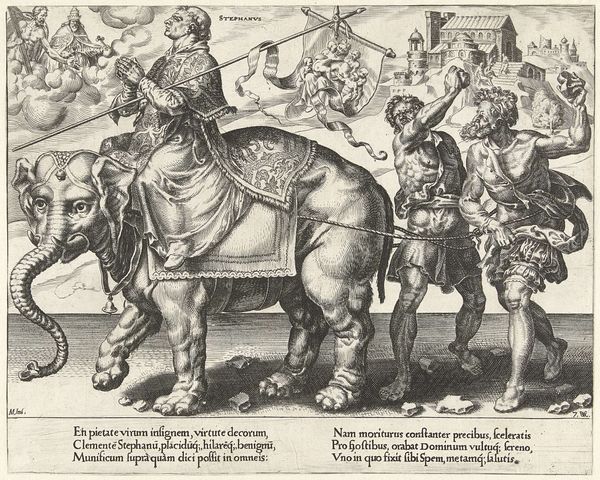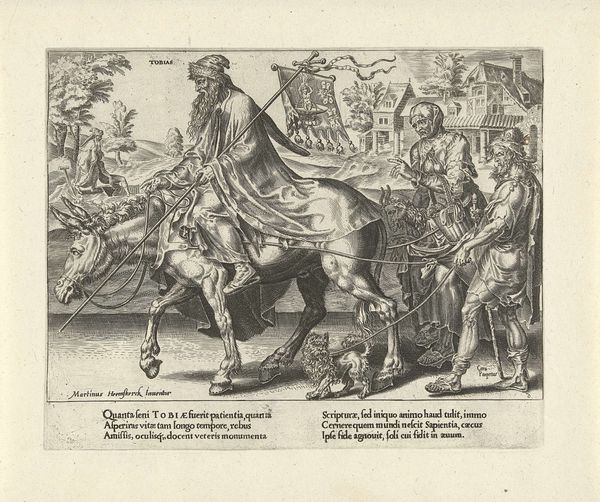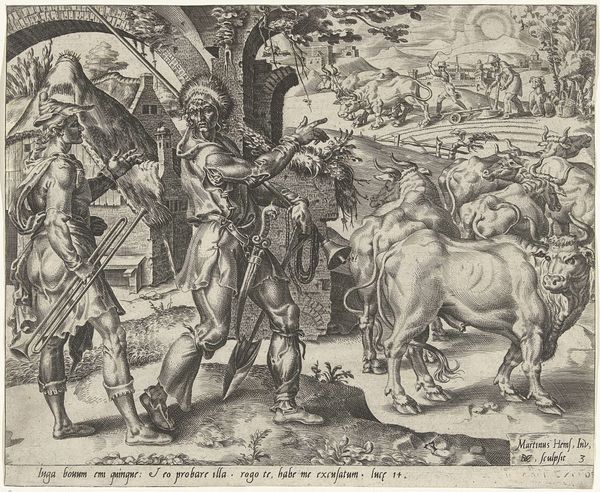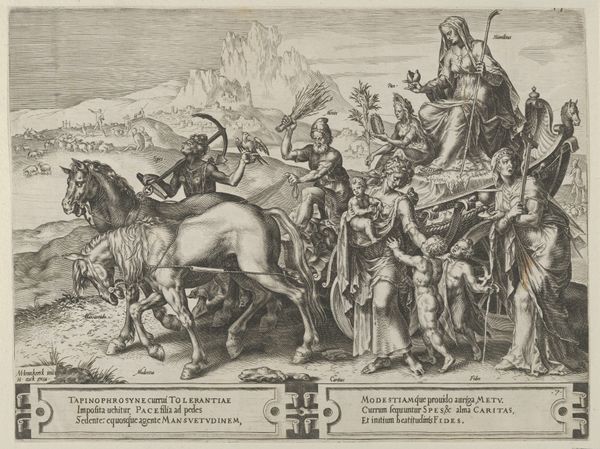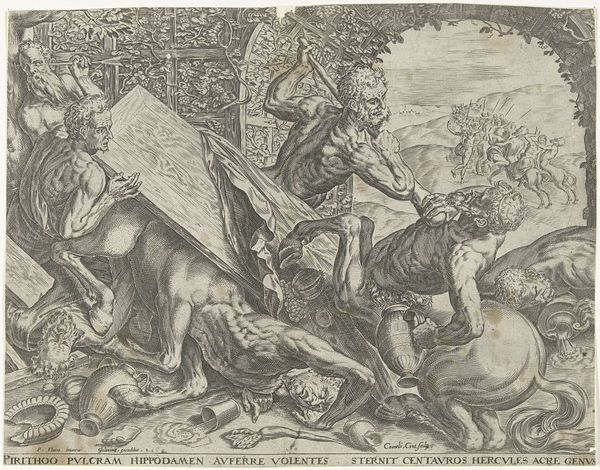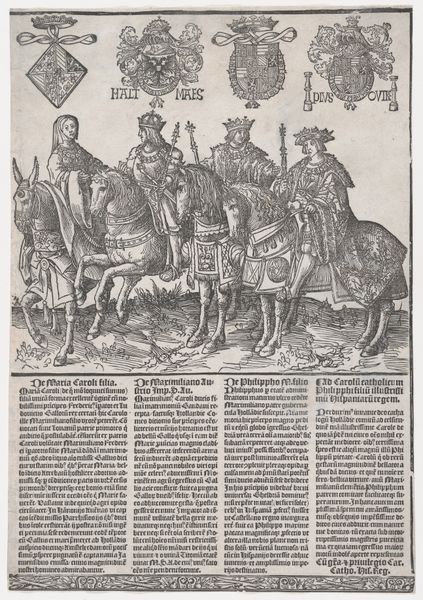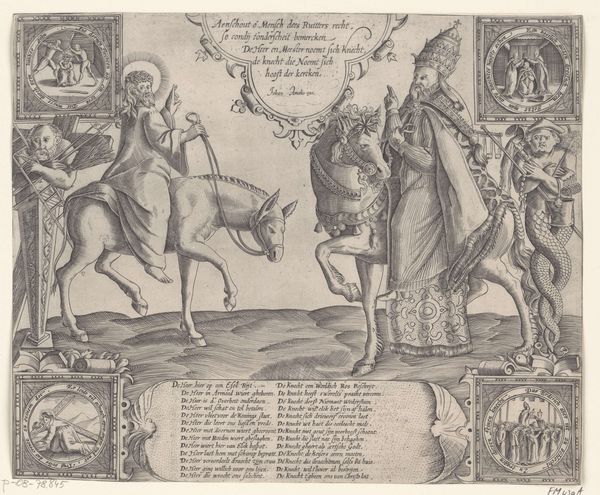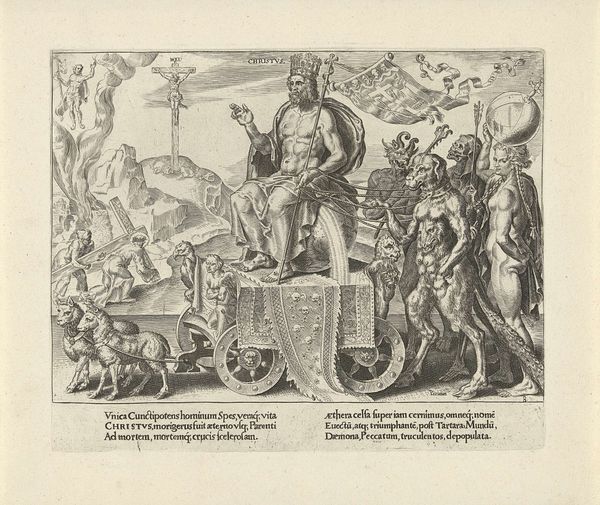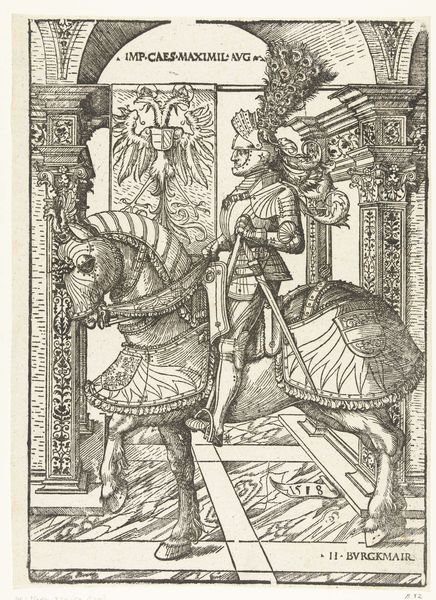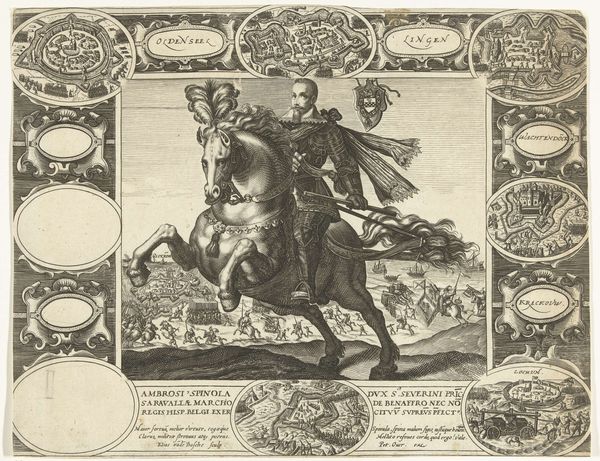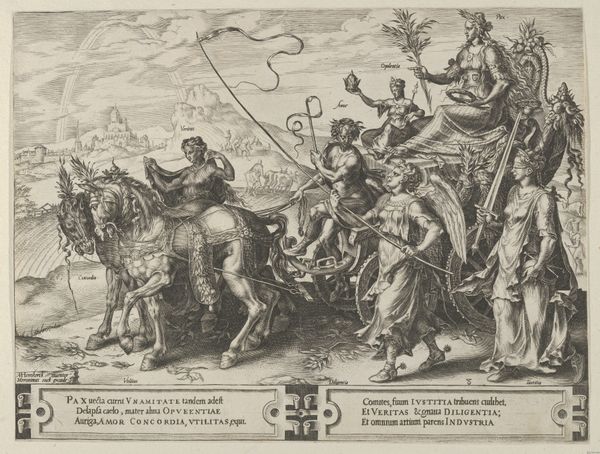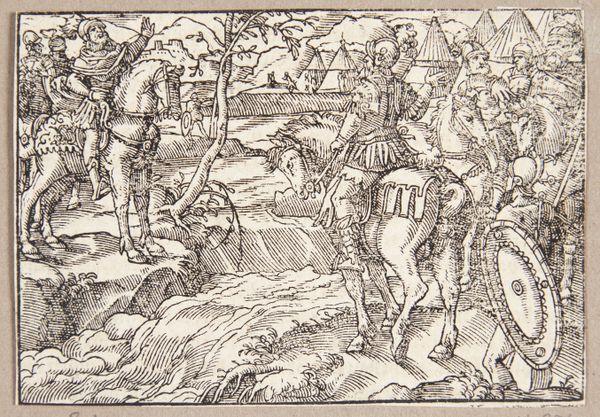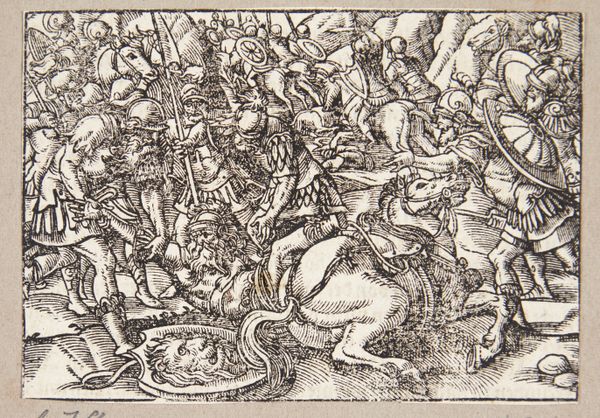
drawing, print, engraving
#
drawing
# print
#
figuration
#
11_renaissance
#
line
#
history-painting
#
northern-renaissance
#
engraving
Dimensions: height 206 mm, width 256 mm
Copyright: Rijks Museum: Open Domain
Editor: Here we have Dirck Volckertsz Coornhert's "Triumph of David," from 1559. It’s an engraving, a print, and there's a stark, almost severe quality to the lines. What I find striking is how much material detail is rendered - the armor, the lion's fur. What catches your eye about it? Curator: Well, let’s think about what engraving, the chosen method of production, brings to the interpretation. The print isn’t simply about *representing* David’s triumph; it's about making that narrative accessible. Multiple copies mean broader distribution. Considering the laborious process of engraving – the meticulous tooling of the metal – it highlights not just the biblical story but the labor embedded within the artwork. How might this influence its reception among various social classes? Editor: That's interesting. So, the medium itself speaks to ideas of labor and access. I guess the sharp lines become less about just aesthetics and more about the material reality of its creation? Curator: Precisely. Notice how David's armor is prominently displayed, almost fetishized. And consider the socio-economic implications. Armor wasn't just protection; it was a display of wealth, power, and status. How does Coornhert portray this intersection of spiritual narrative and material culture? Think about the intended audience for such a print. Editor: So, the engraving is not just depicting a biblical hero, but it's also displaying markers of social and economic power? Curator: Indeed. It's prompting us to question what "triumph" really means in this context. Is it purely spiritual, or is it entwined with the earthly realms of power and possessions? Editor: I see it! By focusing on the materials and the process, it offers a different, almost grounded perspective on a classic story. Thanks for making me consider those connections. Curator: Of course! Looking at art through the lens of material production and distribution offers really important insights, I think, far beyond mere decoration and taste. It certainly reveals a deeper understanding of cultural values in that period, doesn't it?
Comments
No comments
Be the first to comment and join the conversation on the ultimate creative platform.
